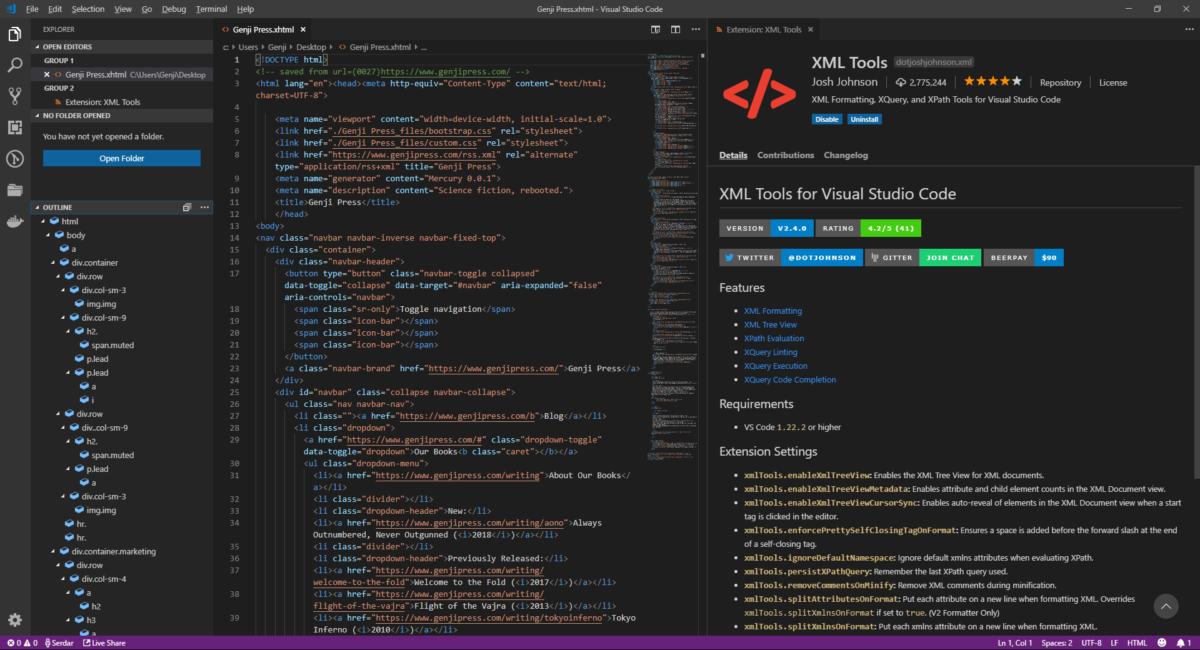
- #LINTING PYTHON IN VISUAL STUDIO CODE HOW TO#
- #LINTING PYTHON IN VISUAL STUDIO CODE INSTALL#
- #LINTING PYTHON IN VISUAL STUDIO CODE CODE#
You can easily change by using the Python: Enable Linting command. To change the linting behavior across all enabled linters, modify the following settings: Feature

#LINTING PYTHON IN VISUAL STUDIO CODE CODE#
Refer to User and Workspace settings to find out more about working with settings in VS Code generally. You can add any of the settings to your user settings.json file (opened with the File > Preferences > Settings command ⌘, (Windows, Linux Ctrl+,)). The remainder of this article describes settings for linting in general as well as specific linters. Hovering over an underlined issue displays the details: Issues are shown in the Problems panel and as underlines in the code editor. Open the Command Palette ( ⇧⌘P (Windows, Linux Ctrl+Shift+P)), then enter and select Python: Run Linting.Linting runs automatically when you save a file.You can disable all Python linting with the Python: Enable Linting command, which shows a dropdown with the current linting state and options to turn Python linting on or off.
#LINTING PYTHON IN VISUAL STUDIO CODE INSTALL#
In that case, either run VS Code elevated, or manually run the Python package manager to install the linter at an elevated command prompt for the same environment: for example sudo pip3 install pylint (macOS/Linux) or pip install pylint (Windows, at an elevated prompt) Disable linting Note: If you're using a global environment and VS Code is not running elevated, linter installation may fail. See Specific linters for details.Įnabling a linter prompts you to install the required packages in your selected environment for the chosen linter. This command adds "": true to your settings, where is the name of the chosen linter. To enable linters, open the Command Palette ( ⇧⌘P (Windows, Linux Ctrl+Shift+P)) and select the Python: Select Linter command. You can easily enable and disable all linting by using the Python: Enable Linting command. If you require third-party linters for additional problem detection, however, you can enable them by using the Python: Select Linter command and selecting the appropriate linter. Linting is thus distinct from Formatting because linting analyzes how the code runs and detects errors whereas formatting only restructures how code appears.īy default, stylistic and syntactical code detection is enabled by the Language Server. For example, linting detects use of an uninitialized or undefined variable, calls to undefined functions, missing parentheses, and even more subtle issues such as attempting to redefine built-in types or functions. Linting highlights syntactical and stylistic problems in your Python source code, which oftentimes helps you identify and correct subtle programming errors or unconventional coding practices that can lead to errors.

#LINTING PYTHON IN VISUAL STUDIO CODE HOW TO#
Finally, you will learn how to integrate Azure for Python and how to use containers in Visual Studio Code.

You will also work with Python frameworks such as Django and go through data science specific-information and tutorials. Next, you will set up the environment and run your projects along with the support for Jupyter. Here, you will learn about the required extensions of Visual Studio Code to perform various functions such as linting and debugging in Python. The Optimizing Visual Studio Code for Python Development book starts with an introduction to Visual Studio Code followed by code editing in Python. This book addresses custom scenarios for writing programs in Python frameworks, such as Django and Flask. Learn Visual Studio Code and implement its features in Python coding, debugging, linting, and overall project management. Optimizing Visual Studio Code for Python Development: Developing More Efficient and Effective Programs in Python

Publisher: WOW! eBook (October 5, 2021).


 0 kommentar(er)
0 kommentar(er)
